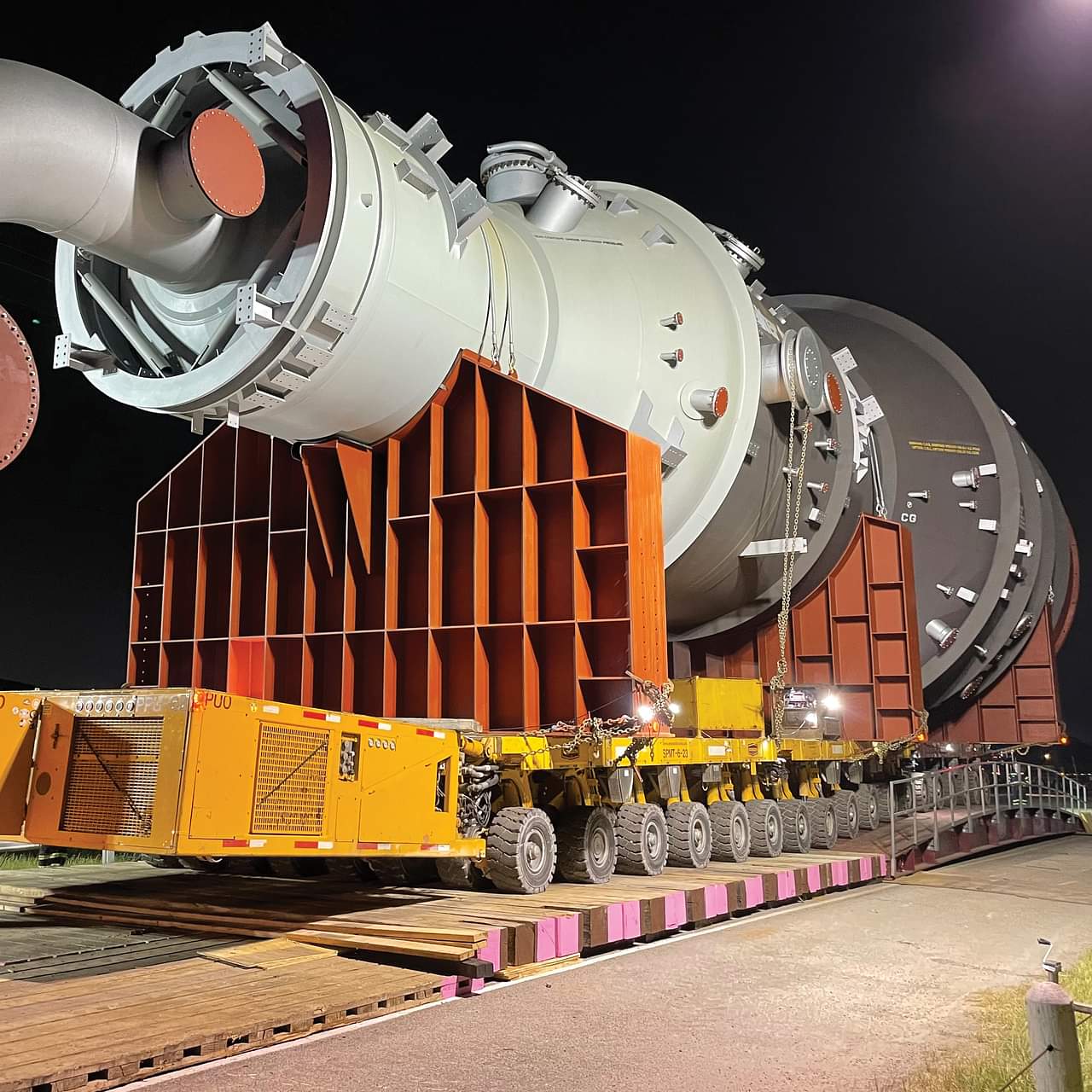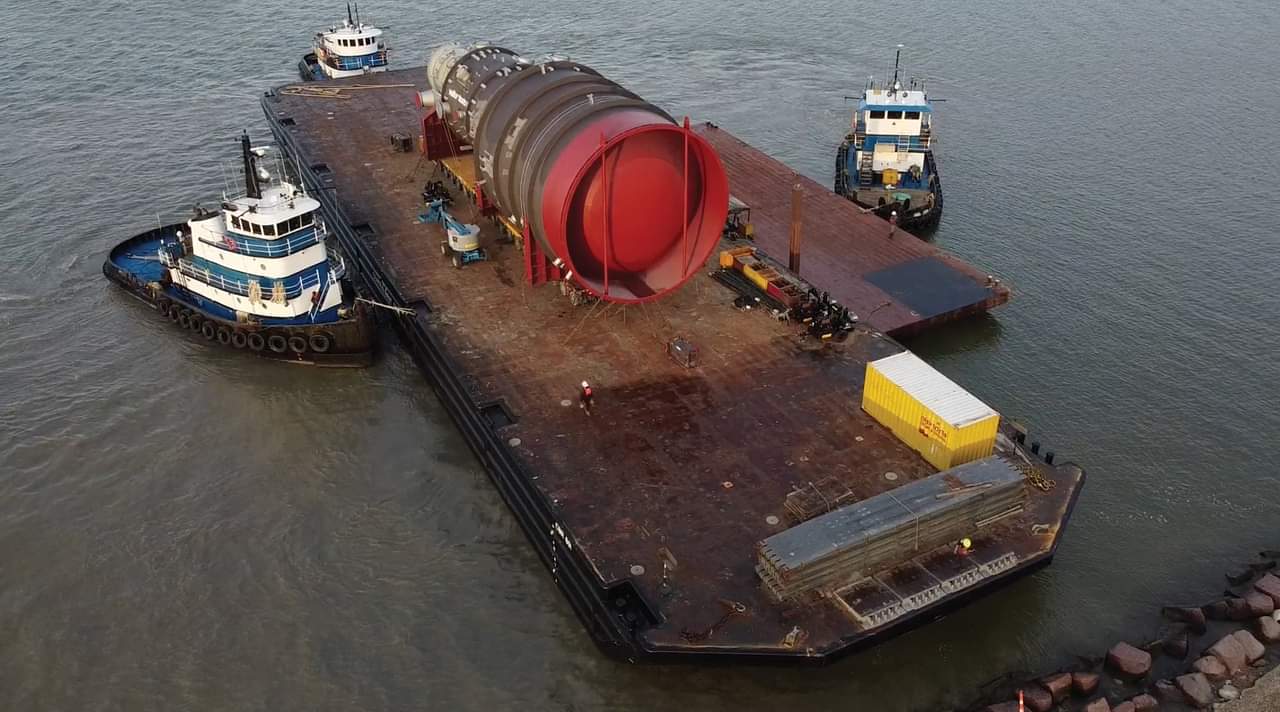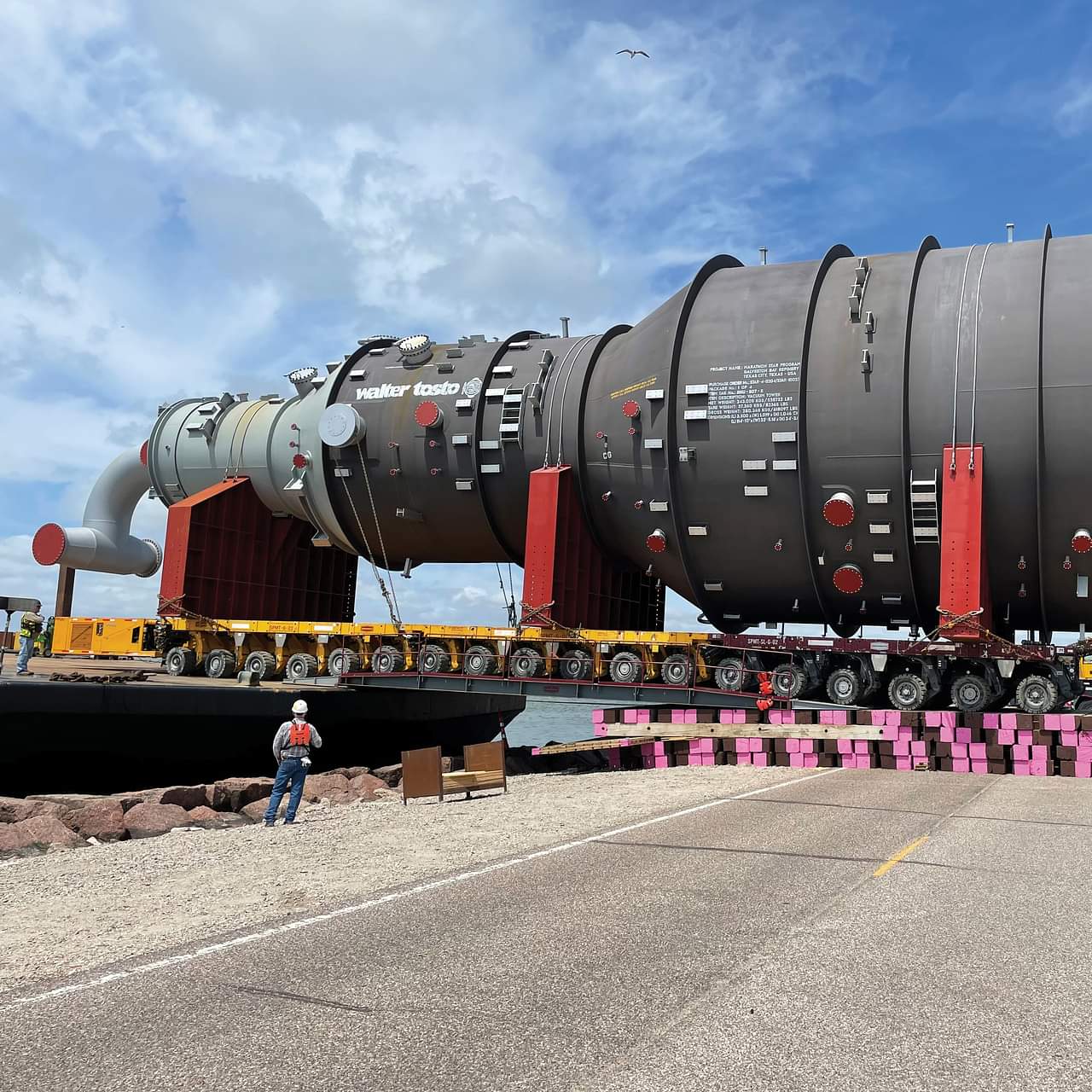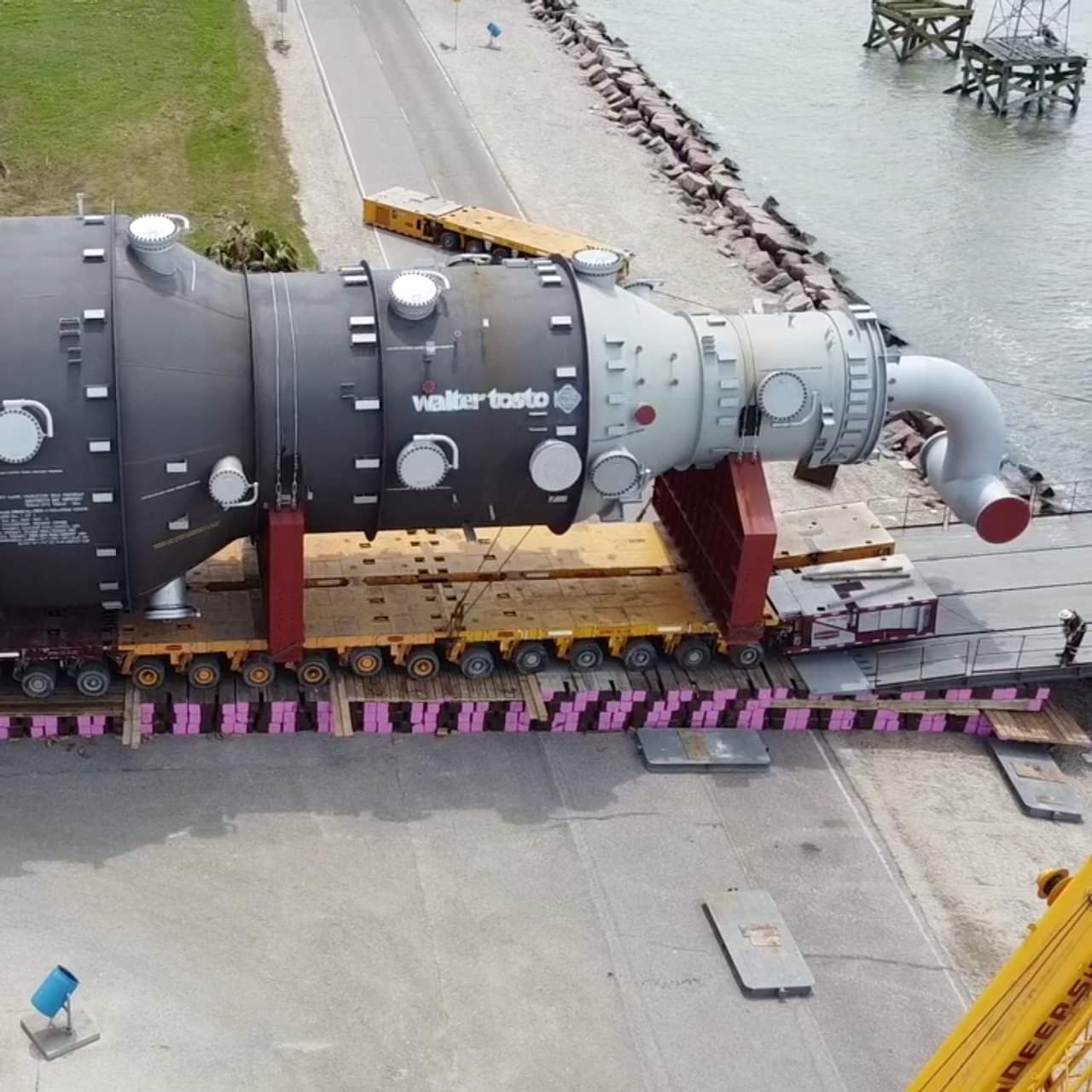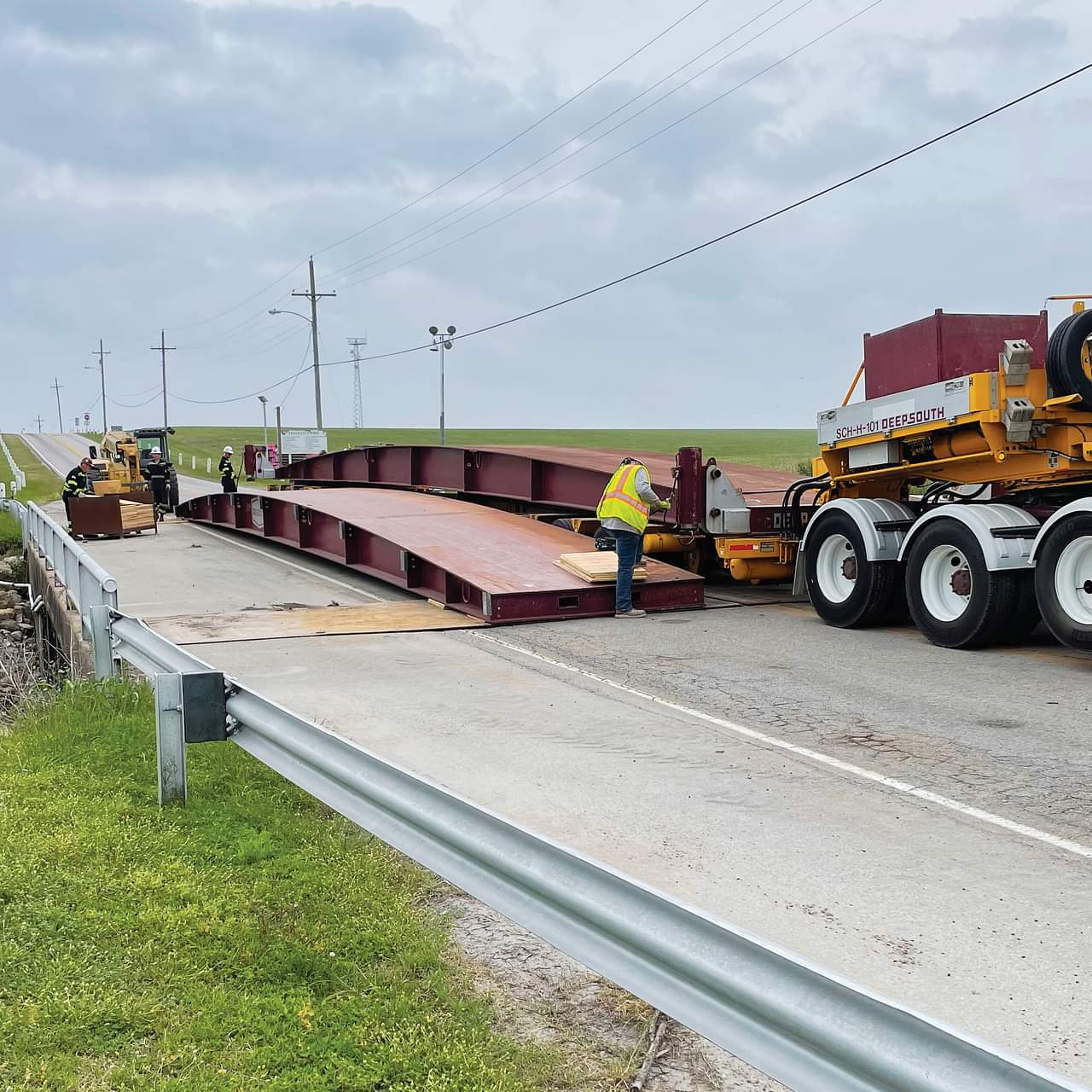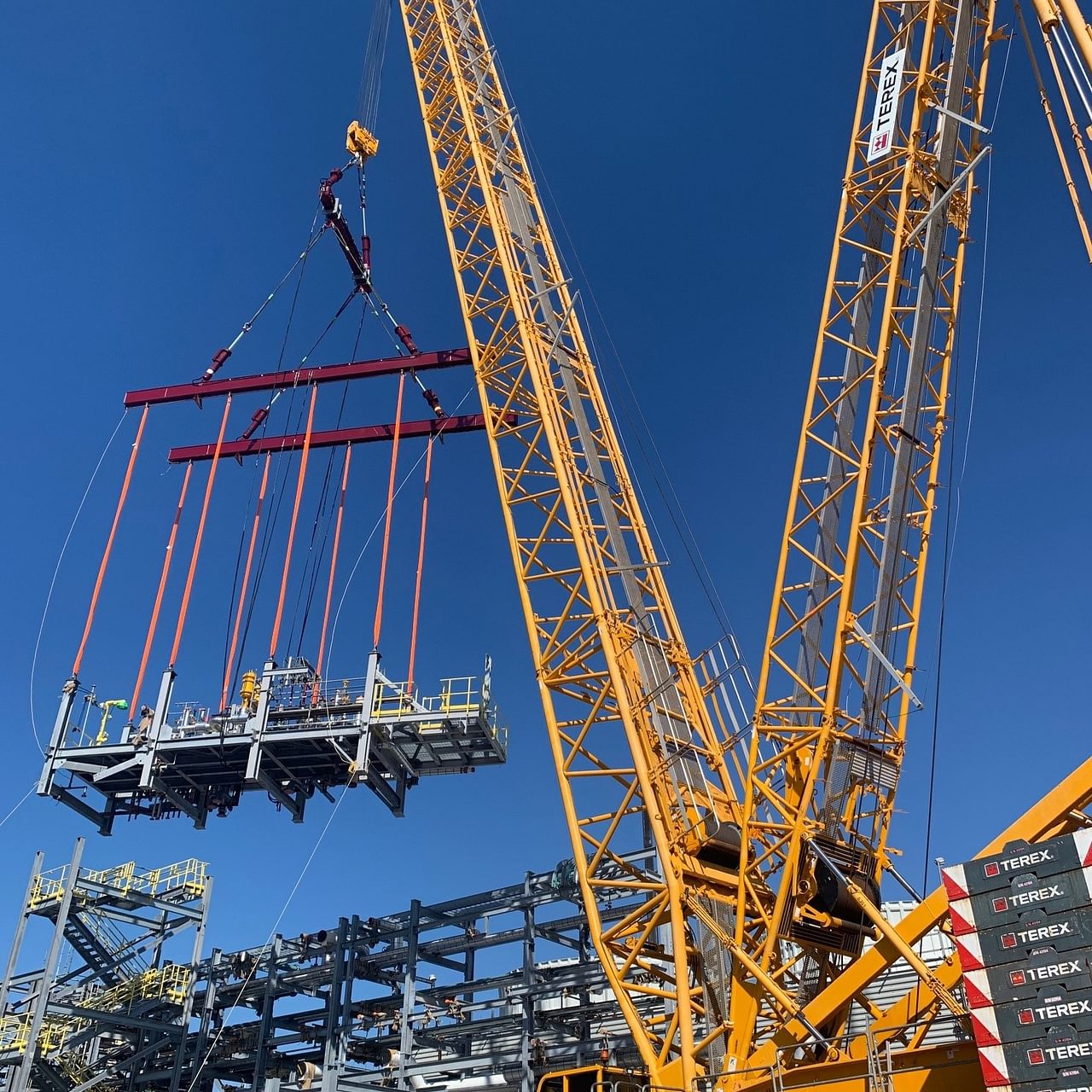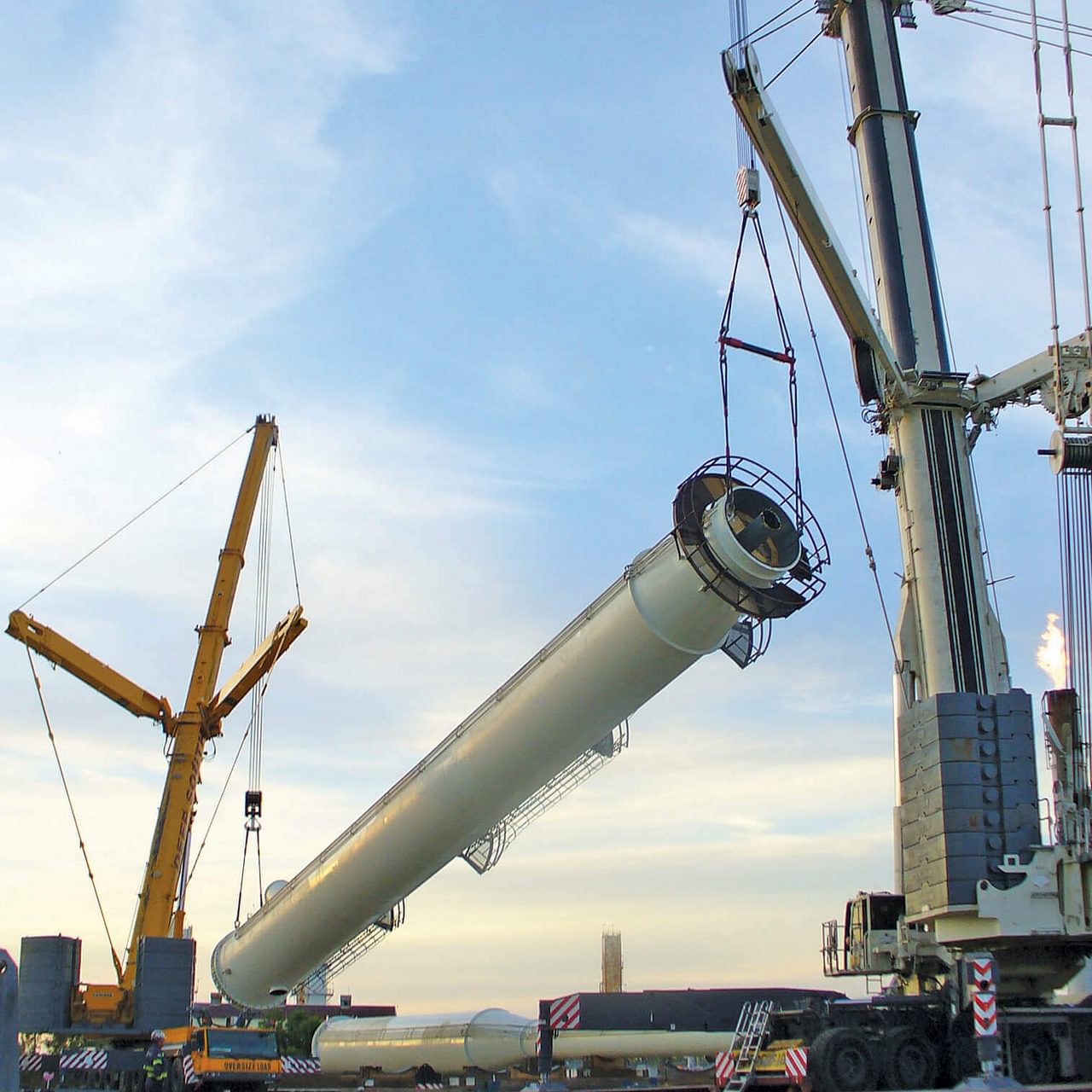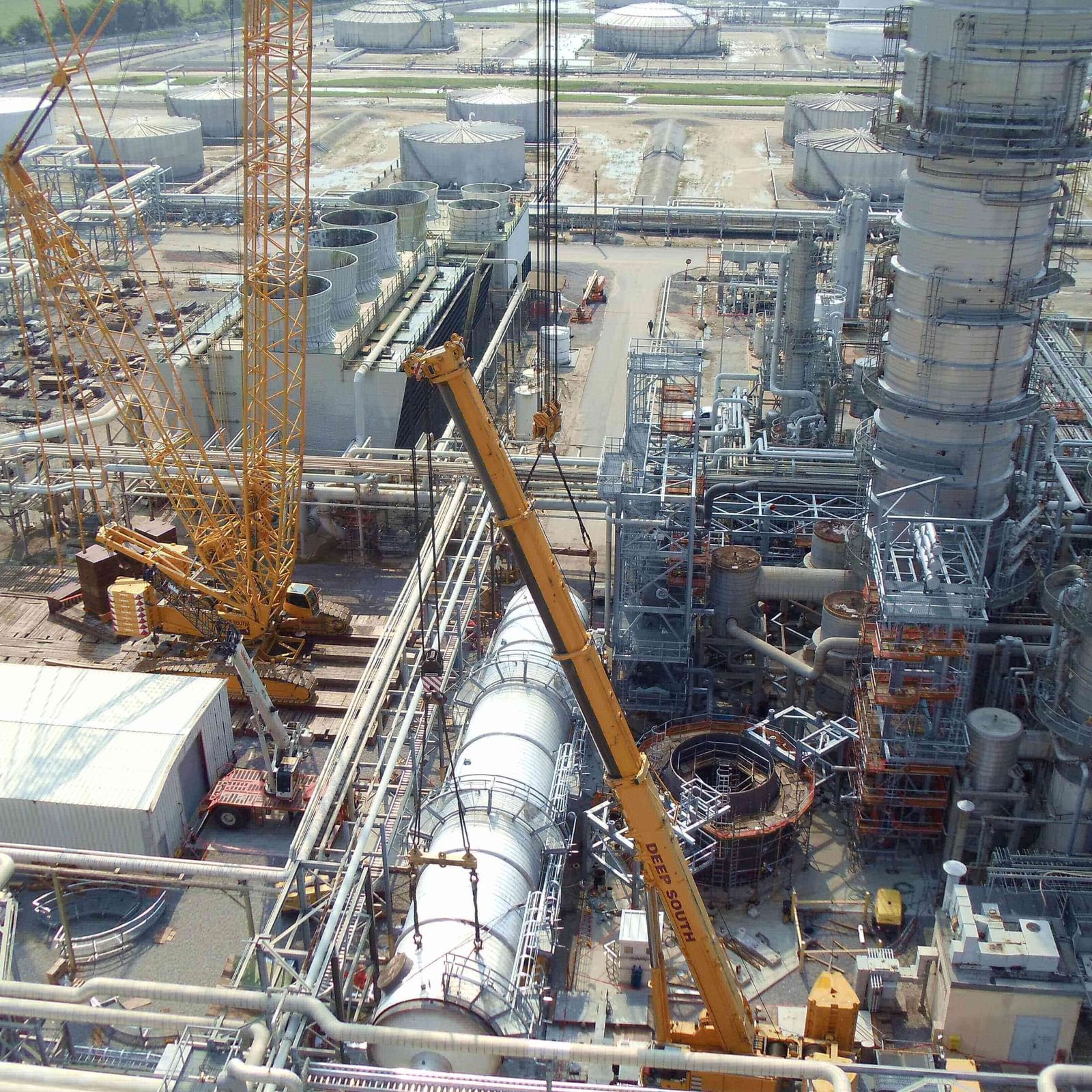A Technical Towering Roll, Move and Lift
As part of a complex project for a refinery, the Deep South team was tasked with receiving, transporting and lifting a 114’-7” x 33’-5” x 39’-10” vacuum tower weighing in excess of one million pounds. This multi-step project required considerable planning, technology and creative thinking.
Adapting to Unstable Conditions
The tower was received from ship’s gear onto a prepped barge that was then pushed to the Texas City Dock for roll-off, a task that presented a combination of unique challenges. First, the low tide levels prevented the barge from lowering the water side elevation while the shore’s edge rocks extended the barge ramp span and slope, creating an elevation change of 3’.
The team used an increased number of mats to raise the landing side elevation and create a stable and level roll-off ramp that extended 40’ feet from the barge deck to dock. The tower was then rolled off with a double-wide, 18-axle-line Scheuerle SPMT in standard configuration and then transported into the plant for temporary staging, dress out, and prep work.
The simplicity of the double-wide transport configuration provided the best possible turning capability to support the over-the-road and in-plant haul, which allowed the team more time to focus on transport height and transmission line impact.
The most challenging part of the transport was logistics to get around transmission lines. Multiple utility companies were involved in pre-planning to determine who was responsible for what lines and the process to get them raised or relocated in a timely fashion to work around the window of transport. Multiple pre-move walks were conducted for review prior to execution.
Deep South then weighed the tower using a Straightpoint Bluetooth Weighing System.
Lines of Concern
Several months following the initial transport and weigh-in, Deep South returned to the staging area to move the tower into the refinery.
From the 6' elevated staging area, a dual-sectioned temporary (jumper) bridge was constructed to transport the vessel over an existing sleeper pipe rack and provide a level surface to climb down to grade - while allowing for a 30-degree turning capability for an in-line approach to the crane area for tailing.
The first section of the temporary bridge system used Deep South's 100' temporary (jumper) bridges, in conjunction with planned timber matting, to achieve the first half of the required elevation change once the load had cleared the refinery's sleeper rack. The second section of the temporary bridge system used Deep South's 30' barge ramps setup at a 30-degree angle with timber matting. This allowed Deep South to achieve the final elevation change while reducing the amount of mats required.
Finally, crews set the tower using the 1,000-ton VersaCrane CC-12000 and a 440-ton Tadano Demag CC-2400-1 for tailing.
Planned with Purpose
The vacuum tower project required almost two years of planning with the local governmental authorities and the local power companies to schedule major transmission line outages and transport the vacuum tower safely to the site. Comprehensive pre-job surveying was also conducted to determine what areas on the top approach side and lower landing side required civil work for a level transport.
